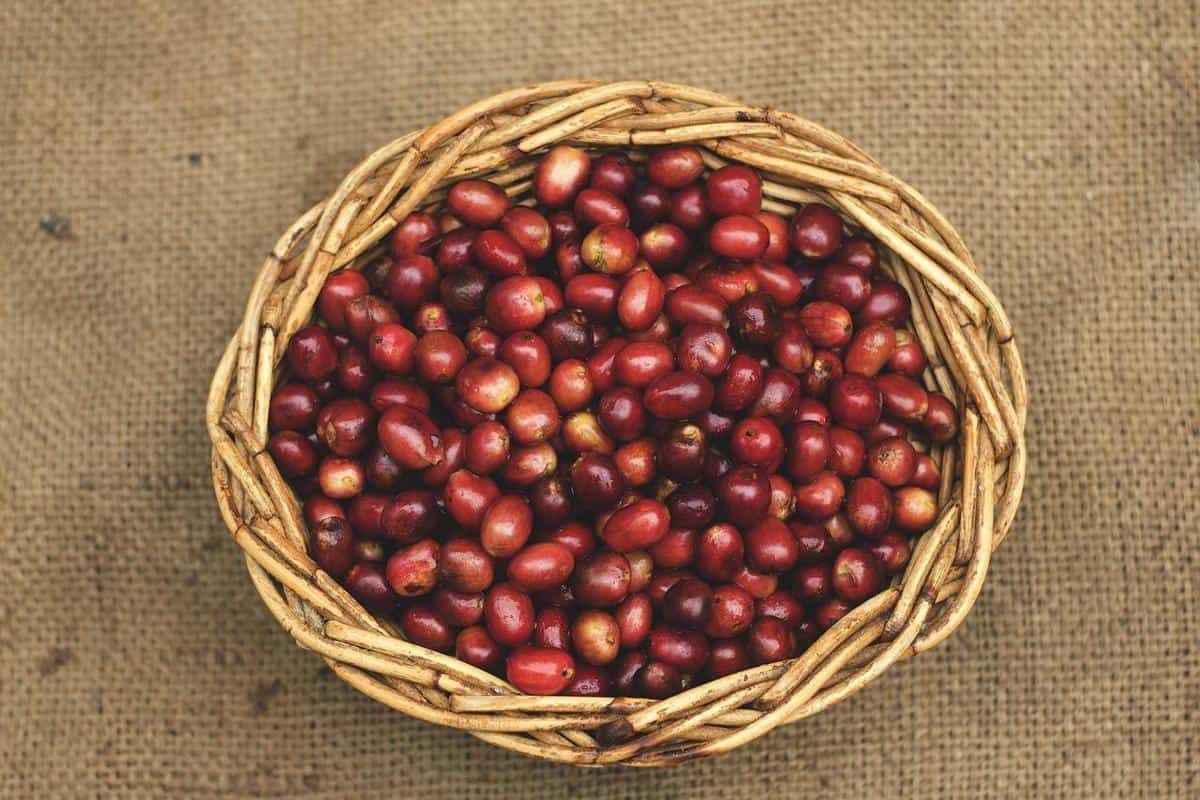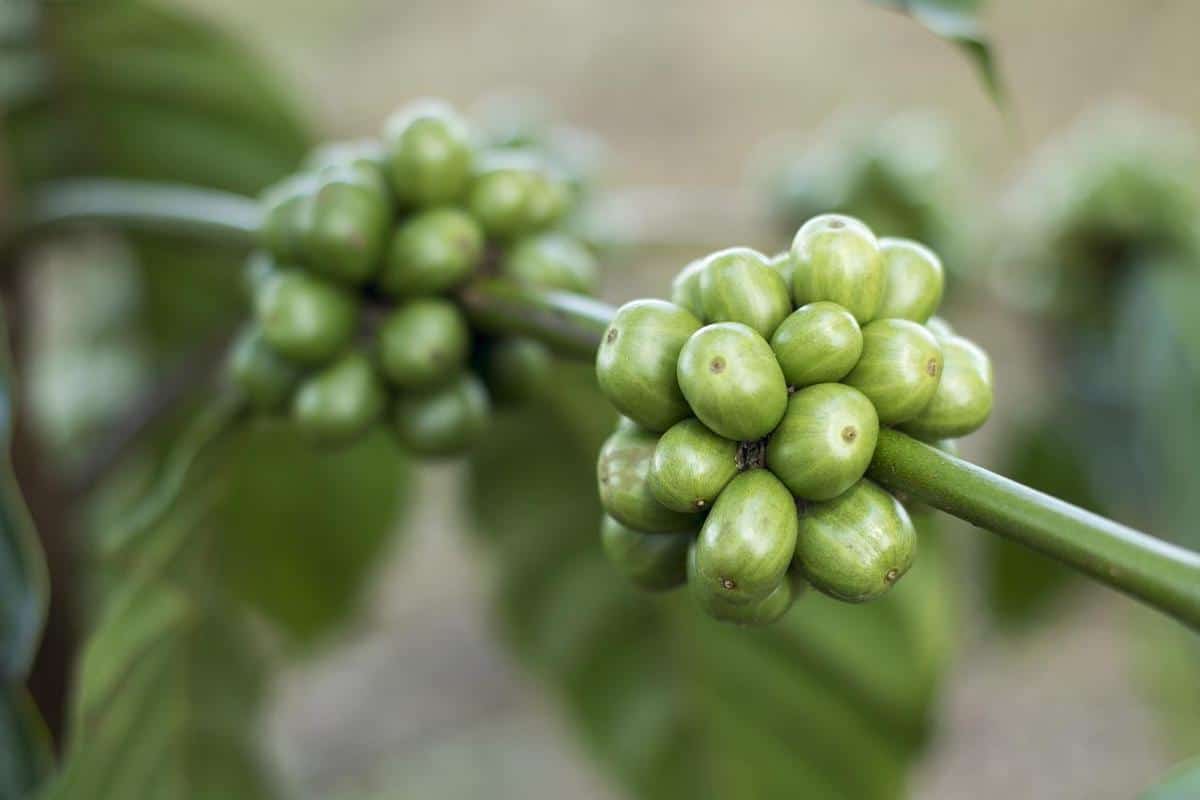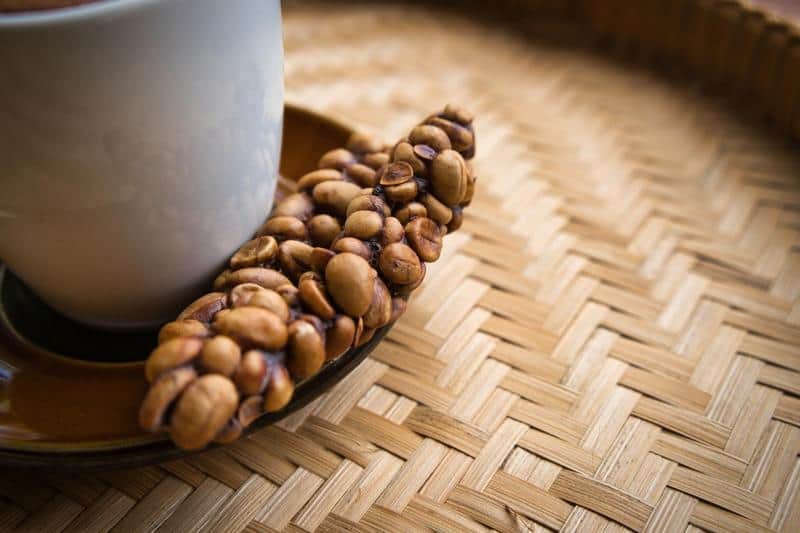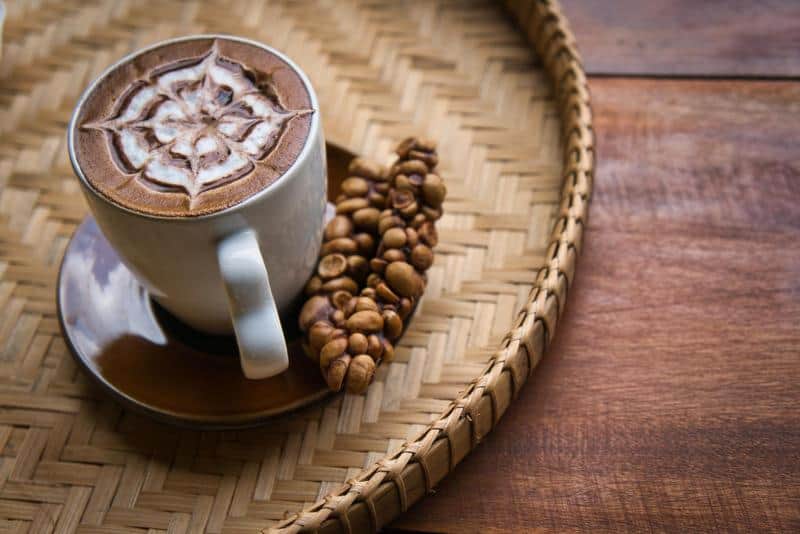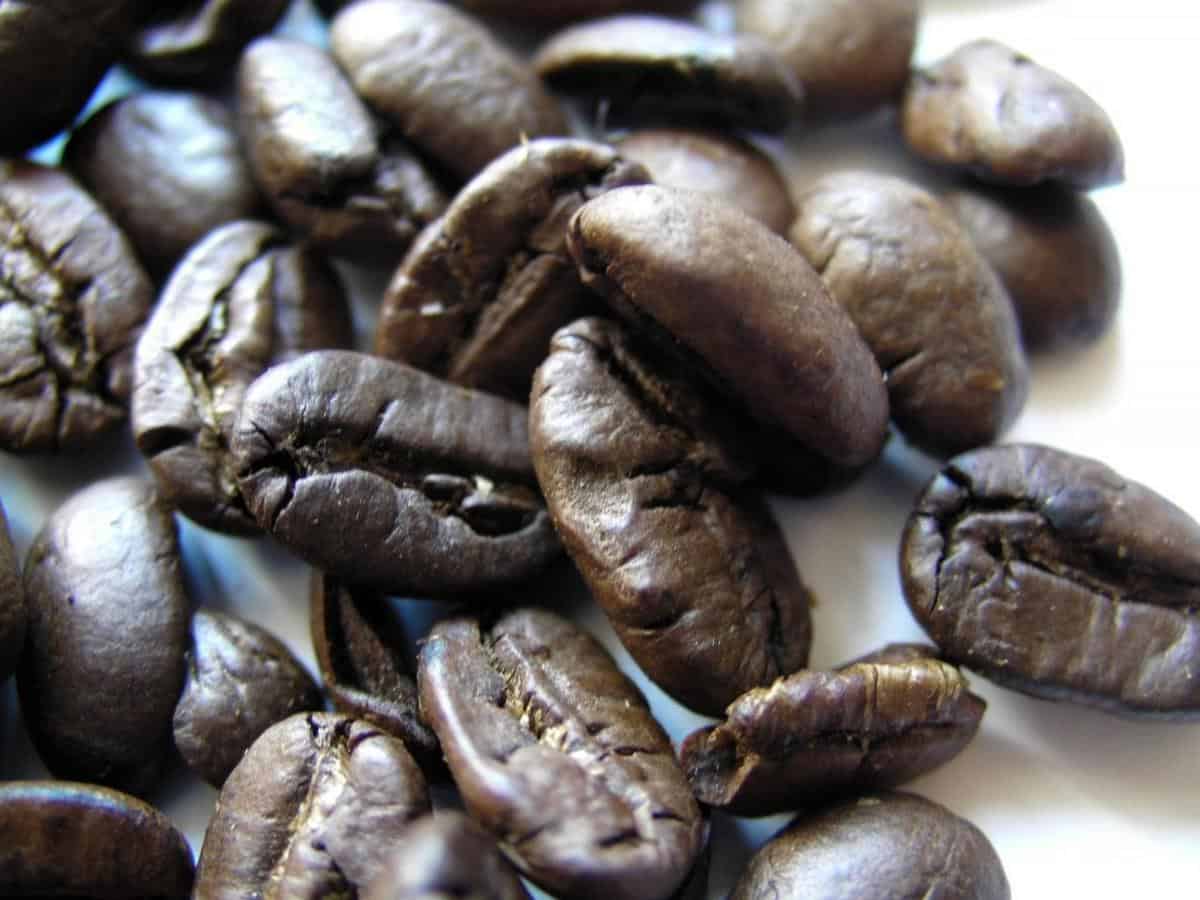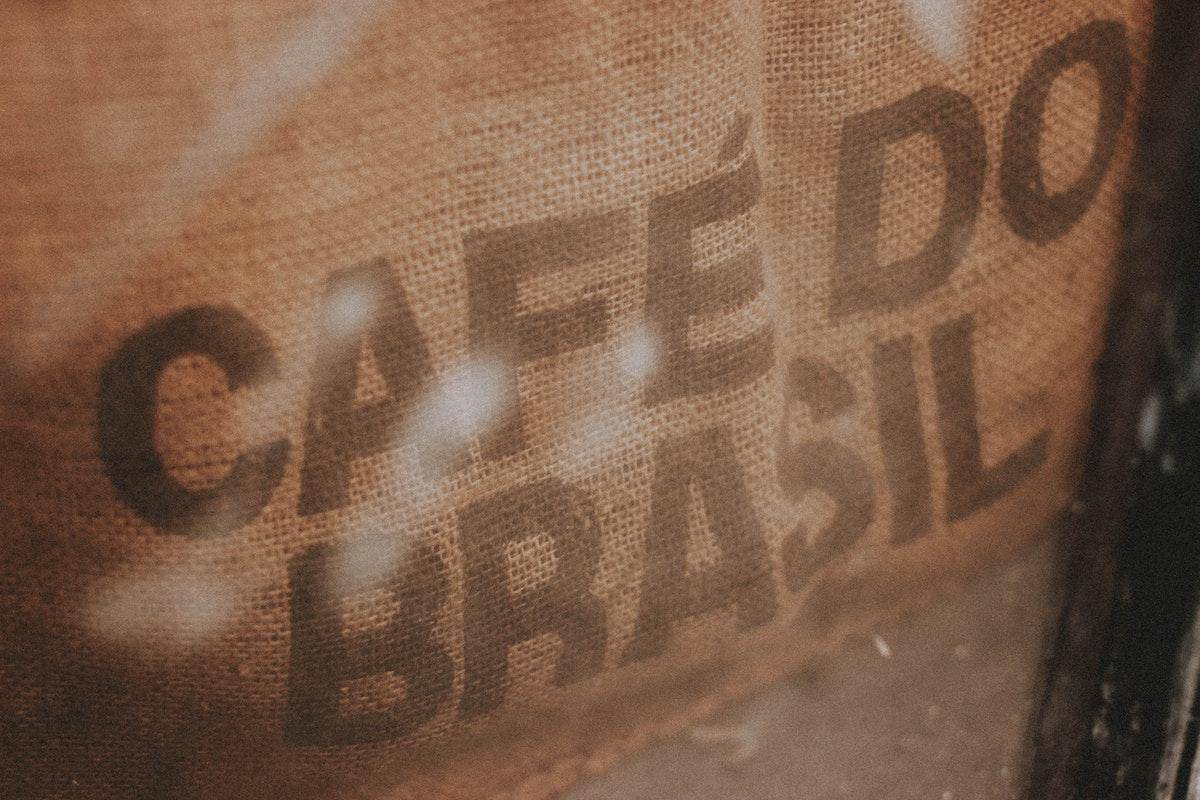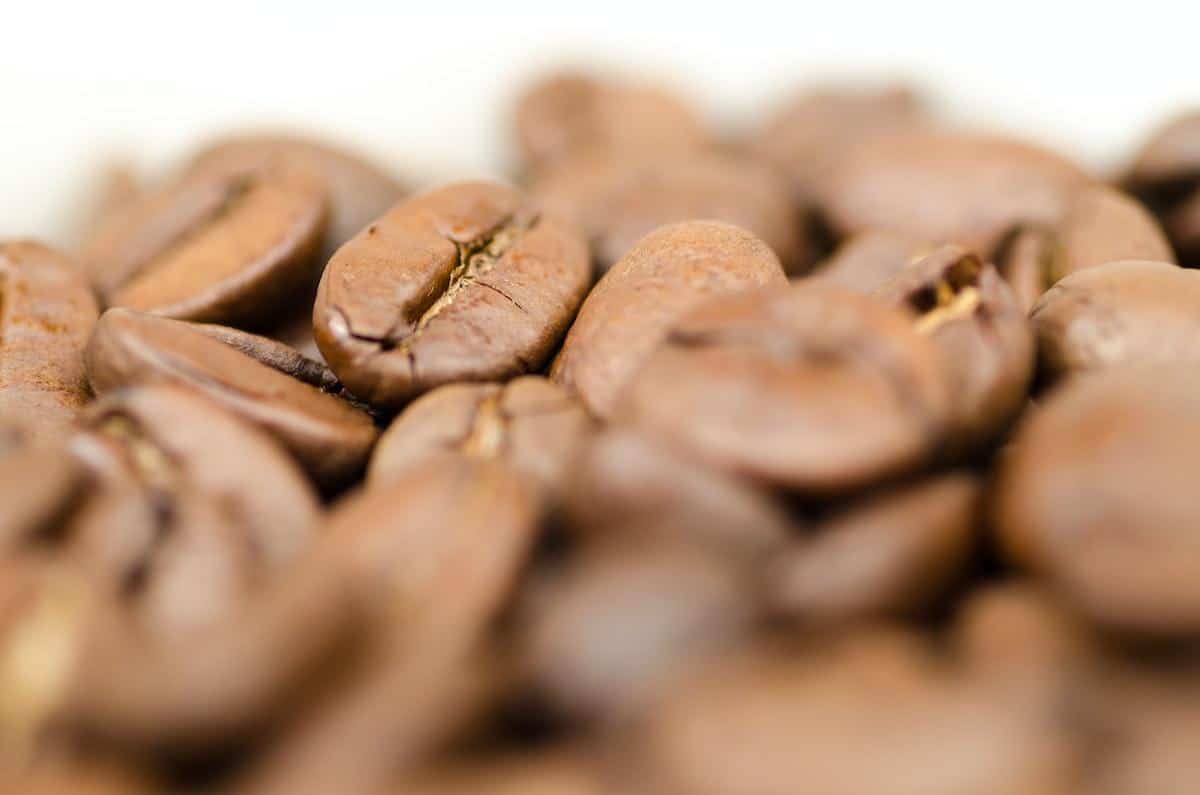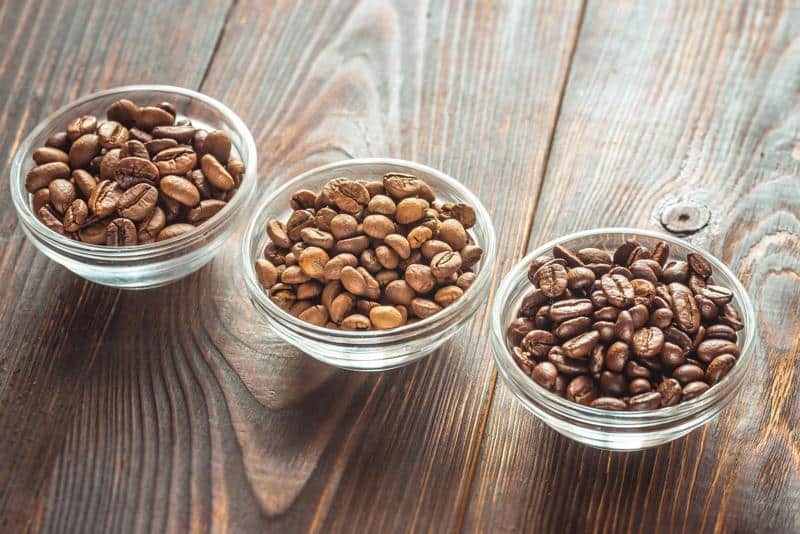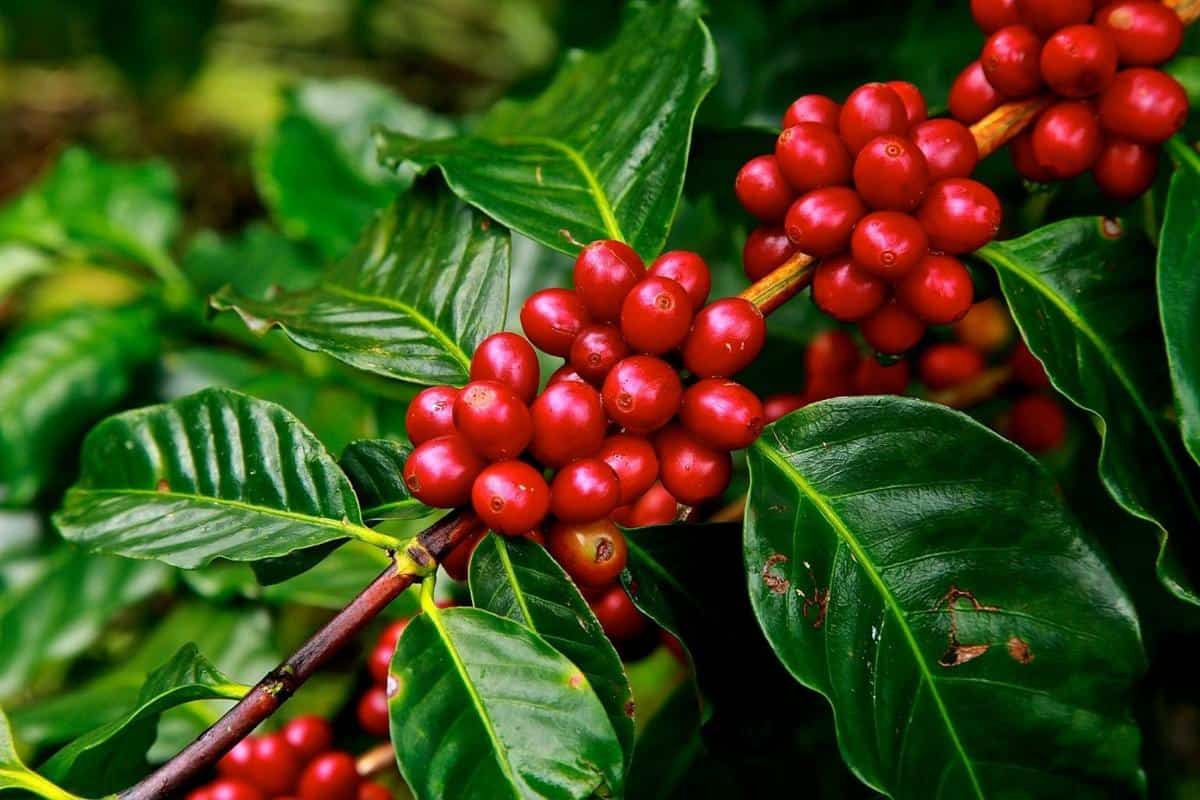Sumatra coffee is renowned for its exquisite flavor and unique origins, making it a true powerhouse brew. This article will take you on a journey to uncover the rich and flavorful experience that Sumatra coffee has to offer. From its centuries-old tradition and craftsmanship to its distinct characteristics and special blends, we will explore every aspect of this beloved coffee.
The history of Sumatra coffee is steeped in tradition and craftsmanship, as generations of farmers have worked the land to produce this exceptional brew. We will delve into the origins of Sumatra coffee, unearthing the secrets behind its rich history and heritage.
One of the most striking features of Sumatra coffee is its bold, earthy, and full-bodied profile. We will unravel the distinct characteristics that set this brew apart from others, exploring what makes it so unique and beloved by coffee enthusiasts around the world.
Join us on a deep dive into the art of harvesting and processing Sumatra coffee as we explore the journey from bean to brew. Discover how careful cultivation techniques and meticulous processing methods contribute to creating the perfect cup of Sumatra coffee.
Sumatra coffee‘s flavor isn’t just delicious; it’s also influenced by factors such as soil, climate, and altitude-the concept known as terroir. We will delve into how these elements shape the taste profile of Sumatra coffee, adding depth and complexity to each sip.
Intrigued? Come along as we embark on an exciting exploration of everything there is to know about Sumatra coffee – from its rich history to its health benefits and top recommended picks. Whether you’re a seasoned connoisseur or just starting your journey into gourmet coffees, there’s no doubt that you’ll find something fascinating about Sumatra coffee. So sit back, pour yourself a steaming cup, and let’s savor the richness together.
The History of Sumatra Coffee
Sumatra coffee has a long and storied history that dates back centuries. The lush landscapes of this Indonesian island have provided the perfect conditions for growing and cultivating this unique brew. From its origins with Dutch colonialists to the present day, Sumatra coffee has become synonymous with tradition and craftsmanship.
The Arrival of Coffee in Sumatra
Coffee was first introduced to Sumatra by Dutch traders in the late 17th century. They recognized the prime location of the island, with its volcanic soil and tropical climate, as ideal for coffee cultivation. The seeds were brought over from Yemen, where coffee had been grown for centuries, and they flourished in the fertile highlands of Sumatra.
Traditional Processing Techniques
One of the key aspects that sets Sumatra coffee apart is its unique processing method. Known as “wet-hulling” or “semi-washed”, this technique involves removing the fruit pulp from the beans before they are completely dry. This process gives Sumatra coffee its distinctive flavor profile, characterized by earthy and herbaceous notes. It also contributes to its full-bodied and low acidity qualities.
A Tradition of Handcrafted Excellence
Sumatran farmers take great pride in their coffee-growing traditions, which have been passed down through generations. The entire process, from seedling to harvesting to processing, is often done by hand with meticulous care. This commitment to craftsmanship ensures that each batch of Sumatra coffee is crafted with precision and attention to detail.
As you sip on a cup of Sumatra coffee today, you can taste the heritage and centuries of tradition that went into producing it. The history of this powerhouse brew adds depth and richness to every sip, making it a truly remarkable experience for coffee lovers worldwide.
The Distinct Characteristics of Sumatra Coffee
Sumatra coffee is renowned for its distinct characteristics, offering a bold, earthy, and full-bodied profile that sets it apart from other coffee varieties. This unique flavor profile is a result of various factors, including the terroir of the region and the specific processing methods used.
One of the key factors contributing to the distinct characteristics of Sumatra coffee is the terroir – the combination of soil, climate, and altitude in which the coffee is grown. The volcanic soil in Sumatra provides rich nutrients to the coffee trees, resulting in a unique taste.
The high altitude at which many coffee farms are located also contributes to the flavor profile by slowing down the maturation process of the beans, allowing them to develop a more complex and intense flavor.
In addition to terroir, another factor that contributes to Sumatra coffee’s distinctive characteristics is the traditional processing method known as “wet-hulling” or “Giling Basah.” Unlike other processing methods that involve fully drying the coffee cherries before removing their skin and pulp, wet-hulling involves removing them when they are still partially wet. This results in a characteristic dark color and heavy body with low acidity, making Sumatra coffee stand out among other coffees.
To further enhance these unique flavors and aromas when brewing Sumatra coffee, certain brewing techniques can be employed. Many experts recommend using a French press or pour-over method to fully extract all of the bold flavors from this robust bean. It’s also worth experimenting with different water-to-coffee ratios and brewing times to find your preferred strength and intensity.
Overall, if you’re looking for a bold and full-bodied cup of coffee with an earthy undertone, Sumatra coffee is sure to satisfy your taste buds. Its distinct characteristics derived from terroir and traditional processing methods make it a favorite among many coffee connoisseurs worldwide.
| Characteristics | Description |
|---|---|
| Flavor Profile | Bold, earthy, and full-bodied |
| Terroir | Volcanic soil, high altitude |
| Processing Method | Wet-hulling or Giling Basah |
| Brewing Techniques | French press, pour-over |
The Journey from Bean to Brew
Sumatra coffee, known for its bold and unique flavor profile, goes through an intricate journey from bean to brew. The process involves several important steps, each contributing to the rich taste and aroma that Sumatra coffee is famous for. Understanding the art of harvesting and processing this Indonesian powerhouse brew provides a deeper appreciation for the craft behind each cup.
- Picking the Cherries: The first step in the journey of Sumatra coffee is meticulously picking the ripe cherries by hand. Due to the mountainous terrain where these coffee trees thrive, mechanical equipment is not practical. Skilled farmers carefully select only the ripest cherries, ensuring optimal flavor development.
- Wet-Hulling: Once picked, the cherries go through a unique processing method called wet-hulling or Giling Basah. This process involves removing the outer skin and pulp of the cherry while leaving a portion of the mucilage intact during drying. Wet-hulling contributes to Sumatra coffee’s characteristic full-bodied and low acidity profile.
- Drying Process: After wet-hulling, the parchment-coated beans are spread out on patios or raised beds to dry under natural sunlight for several days. This careful drying process helps develop complex flavors within each bean. Farmers constantly monitor moisture levels and ensure even drying to avoid mold or spoilage.
- Hulling and Sorting: Once dried, the parchment layer that surrounds each bean is removed through a hulling machine that separates them from any remaining layers. After hulling, sorting occurs to remove any defects or beans that do not meet quality standards.
- Grading and Packaging: After sorting, grading takes place based on size, density, color, and defects present in each bean batch. The highest-grade beans with minimal defects are typically labeled Grade 1 or Grade 2, showcasing their excellent quality. Finally, the beans are packaged, ready to be exported to coffee enthusiasts around the world.
The journey from bean to brew for Sumatra coffee is a labor-intensive process that showcases the dedication and craftsmanship of Indonesian farmers. Each step in this journey plays a crucial role in creating the enticing flavors and aromas that Sumatra coffee is renowned for. From meticulous cherry picking to unique wet-hulling and careful drying techniques, every detail contributes to the exceptional experience of savoring a cup of Sumatra coffee.
The Role of Terroir in Sumatra Coffee
Sumatra coffee is known for its unique and distinct flavor profile, which is heavily influenced by its terroir. Terroir refers to the environmental factors that impact the growth and development of coffee beans, including soil composition, climate conditions, and elevation. Understanding the role of terroir in Sumatra coffee is essential for appreciating the complexities and nuances that make this brew so special.
One of the key factors that contribute to the flavor of Sumatra coffee is the volcanic soil found in the region. The rich volcanic ash deposits provide fertile ground for coffee plants to thrive, resulting in beans with a deep complexity and earthiness. This unique soil composition infuses flavors into the beans during their growth process, ultimately affecting the taste profile of brewed Sumatra coffee.
Climate also plays a significant role in shaping the flavor characteristics of Sumatra coffee. The region experiences a tropical climate with high humidity and consistent rainfall throughout the year. These conditions create an ideal environment for coffee plants to grow slowly and develop their distinct flavors over time. The combination of warm temperatures, ample rainfall, and high humidity results in beans with lower acidity levels and fuller body.
Lastly, altitude plays a crucial role in determining the flavor profiles of Sumatra coffee. Coffee farms in Sumatra are typically located at higher elevations, ranging from 2,500 to 5,000 feet above sea level. The higher altitude exposes coffee plants to cooler temperatures and thinner air, slowing down their maturation process. This extended growing period allows for more complex flavors to develop within the beans.
| Terroir Factor | Impact on Flavor |
|---|---|
| Volcanic Soil | Creates deep complexity and earthiness |
| Climate | Results in lower acidity levels and fuller body |
| Altitude | Allows for development of more complex flavors |
Understanding the Specialties
Sumatra coffee is renowned for its rich and complex flavors, which are often attributed to the unique varieties and blends that are cultivated in the region. Understanding the specialties of Sumatra coffee means delving into the different varieties and blends that contribute to its distinct character.
One popular variety of Sumatra coffee is Mandheling. Grown on the fertile slopes of Lake Toba, Mandheling beans are known for their low acidity, full body, and intense earthy flavors. These beans are often processed using a dry method, which involves leaving the cherries intact as they dry in the sun. This process contributes to the unique flavors and characteristics that make Mandheling coffee so beloved by enthusiasts.
Another variety worth exploring is Lintong coffee. Grown near Lake Toba as well, Lintong beans have a medium body and exhibit a smooth yet vibrant profile. They often feature hints of chocolate, spice, and fruitiness in their flavor profiles. The wet hulling process used during their production gives them a distinct blue hue when roasted.
In addition to these specific varieties, Sumatra also offers a range of unique blends that combine different bean types to create even more complexity in flavor profiles. One example is the classic “Gayo Mountain blend,” which combines Arabica beans from different regions such as Aceh Gayo, Takengon Highlands, and Bener Meriah. This blend offers a balanced cup with notes of dark chocolate, brown sugar, and herbal undertones.
When exploring Sumatra coffee’s specialties, it is important to note that each variety or blend can vary significantly depending on factors such as soil composition, altitude, climate conditions during growth, and processing methods employed by local farmers.
To fully appreciate Sumatra coffee’s diverse offerings, consider trying different varieties or blends and experimenting with brewing techniques like French press or pour-over to unlock their distinct flavors and aromas. Whether you prefer a bold and earthy cup or a smoother and more complex brew, Sumatra coffee has something to offer every coffee connoisseur.
Brewing Techniques
Brewing a perfect cup of Sumatra coffee requires more than just selecting high-quality beans. The brewing technique plays a crucial role in unlocking the best flavors and aromas that this powerhouse brew has to offer. Whether you prefer a classic drip coffee maker or an intricate manual pour-over method, here are some brewing techniques to help you savor the richness of Sumatra coffee.
- French Press: The French Press method is a popular choice among coffee enthusiasts due to its ability to retain the natural oils and flavors of the coffee. To make Sumatra coffee using this technique, start by coarsely grinding your beans. Then, add the ground coffee into the French Press and slowly pour hot water over it. Allow it to steep for about four minutes before pressing down on the plunger slowly. The result is a full-bodied cup with robust flavors and a rich aroma.
- Aeropress: The Aeropress brewing method is known for producing clean and smooth cups of coffee with intense flavors. To begin, place a paper filter inside the Aeropress cap and rinse it with hot water. Next, add finely ground Sumatra coffee into the chamber and pour hot water over it, stirring gently for about 10 seconds. After that, attach the plunger and press it down slowly over a cup or mug, extracting all the goodness from the beans. This technique allows you to customize your brew time and temperature, resulting in a more personalized flavor profile.
- Cold Brew: For those who enjoy refreshing iced versions of their favorite beverages, cold brew offers a great way to experience the unique characteristics of Sumatra coffee without any acidity or bitterness. When making cold brew Sumatra coffee, start by coarsely grinding your beans and combining them with chilled water in a large container. Allow it to steep in the refrigerator for 12 to 24 hours, then strain the mixture using a mesh sieve or a coffee filter. The resulting concentrate can be diluted with water or milk and served over ice for a smooth, bold, and refreshing cup of Sumatra coffee.
By experimenting with different brewing techniques, you can unlock the best flavors and aromas that Sumatra coffee has to offer. Whether you prefer a French Press, Aeropress, or cold brew method, each technique offers a unique experience that complements the boldness and earthiness of Sumatra coffee. Enjoy exploring these brewing techniques to find your perfect cup of this delightful brew.
The Cultural Significance of Sumatra Coffee
Sumatra coffee holds a significant place in the cultural traditions and societies of the region. Its cultural significance stretches back centuries, as coffee cultivation has been an integral part of Sumatran society since the Dutch colonial era. Sumatra coffee not only sustains local economies but also shapes social rituals and gatherings.
In Sumatra, coffee is more than just a beverage; it is a symbol of hospitality and social connection. The act of serving and drinking coffee has deep-rooted cultural practices attached to it.
For example, the traditional Sumatran coffee ceremony called “adat basandi syara,” which translates to “derived from tradition” in Indonesian, is an important cultural ritual that brings people together. This ceremony involves elaborate brewing techniques using traditional methods such as manual grinding and brewing in a clay pot called “sanger”.
Furthermore, Sumatra coffee has become a source of pride for local communities. The artistry involved in cultivating and processing Sumatra coffee has been passed down through generations, creating a sense of identity and heritage among the people. The traditional farming methods, respect for nature, and meticulous attention to detail contribute to the unique flavors and qualities of Sumatra coffee.
Moreover, the production of Sumatra coffee has had significant economic implications for local communities in rural areas. Coffee farming provides employment opportunities for thousands of individuals, allowing them to sustain their livelihoods and support their families. Moreover, fair trade practices have gained traction in recent years, ensuring that farmers receive fair compensation for their hard work.
Sumatra Coffee and Health Benefits
When it comes to coffee, not only is Sumatra known for its rich flavor and unique origin, but it also offers numerous health benefits. The consumption of Sumatra coffee has been linked to various positive effects on overall well-being due to its natural compounds and antioxidants. In this section, we will delve into the many perks of this powerhouse brew.
Firstly, Sumatra coffee is packed with antioxidants, which are beneficial in neutralizing harmful free radicals in the body. These antioxidants help reduce inflammation and decrease the risk of chronic diseases such as heart disease, certain types of cancer, and neurodegenerative disorders like Parkinson’s disease. Additionally, Sumatra coffee contains chlorogenic acid, a compound that has been shown to have anti-inflammatory properties and may aid in weight management.
Moreover, studies suggest that consuming moderate amounts of Sumatra coffee can boost cognitive function and enhance mental alertness due to its caffeine content. The stimulation from caffeine can improve focus, attention span, and reaction time. It has also been found to enhance sports performance by increasing endurance and reducing perceived exertion during physical activities.
Furthermore, drinking Sumatra coffee has been associated with a reduced risk of developing type 2 diabetes. Research has shown that regular consumption of caffeinated beverages like Sumatra coffee may help lower blood sugar levels and improve insulin sensitivity.
Sumatra Coffee Reviews and Recommendations
In conclusion, Sumatra coffee truly lives up to its reputation as a powerhouse brew with its rich flavor and unique origins. Its centuries-old tradition and craftsmanship contribute to the distinct characteristics that make it stand out in the coffee world. From its bold, earthy, and full-bodied profile to the artful process of harvesting and processing, every step in the journey from bean to brew is carefully executed to bring out the best flavors and aromas.
One cannot discuss Sumatra coffee without acknowledging the role of terroir in shaping its flavor. The impact of the soil, climate, and altitude on coffee beans grown in Sumatra creates a unique taste that can’t be replicated elsewhere. The rich volcanic soil combined with the tropical climate contributes to the complex flavors that coffee connoisseurs seek out.
For those looking to indulge in Sumatra coffee, there are various specialties and blends available to suit every preference. Whether it’s single-origin beans or a blend with complementary flavors, there is something for everyone. Brewing techniques also play a crucial role in unlocking the full potential of Sumatra coffee. Experimentation with different brewing methods such as pour-over, french press, or espresso can enhance the flavors and aromas even further.
Beyond its exceptional taste, Sumatra coffee holds cultural significance as well. It shapes local traditions and societies by providing economic opportunities for farmers and becoming an integral part of daily life for many communities. By enjoying a cup of Sumatra coffee, one can also support sustainable farming practices that prioritize environmental stewardship.
Frequently Asked Questions
What is so special about Sumatra coffee?
Sumatra coffee is special due to its unique flavor profile and its distinct growing conditions. It is grown in the lush volcanic soil of the Indonesian island of Sumatra, which gives it a rich, full-bodied taste.
The terrain, high altitude, and tropical climate contribute to the beans’ complexity and earthy flavors. Additionally, the traditional processing method called wet-hulling, known as “Giling Basah,” is a distinctive characteristic of Sumatran coffee production, resulting in a unique taste experience.
What is the flavor of Sumatra coffee?
Sumatra coffee is known for its bold and intense flavor. It typically exhibits low acidity with earthy undertones and hints of chocolate or tobacco.
The flavor can be described as complex and deep, often with notes of cedar or even spices like cinnamon and nutmeg. Unlike some other varieties that boast bright or fruity flavor profiles, Sumatra coffee offers a robust and savory taste that appeals to those who enjoy a more full-bodied cup.
What is the difference between Arabica and Sumatra coffee?
Arabica and Sumatra are two different species of coffee with distinct characteristics. Arabica coffee is the most commonly consumed type globally, prized for its desirable flavors and lower caffeine content compared to other species. It tends to have a sweeter acidity with floral or fruity notes.
On the other hand, Sumatra coffee belongs to the Robusta species. It has higher levels of caffeine than Arabica but offers a bolder taste profile characterized by earthiness rather than acidity.
Why is Sumatra coffee so expensive?
Several factors contribute to the higher cost of Sumatra coffee compared to other types of coffee. One reason is its limited availability since it is only grown in specific regions such as Aceh in North Sumatra or Gayo Highlands in Central Aceh.
This creates a combination of high demand and relative scarcity that drives up prices in the market. Additionally, the labor-intensive process involved in producing high-quality Sumatran coffee contributes to its elevated price point.
Is Sumatra coffee high in caffeine?
Yes, Sumatra coffee generally contains a higher caffeine content compared to Arabica coffee. As mentioned earlier, Sumatra coffee is predominantly made from the Robusta species, which naturally contains more caffeine than Arabica.
The higher altitude and growing conditions in Sumatra can also contribute to increased caffeine production in the beans. However, it’s worth noting that the precise caffeine content may vary based on factors such as brewing method and individual bean characteristics.

